Growing tomatoes is a satisfying endeavor that many gardeners have come to adore. But did you know that there’s a way to really take your tomato crop to the next level? By unlocking the secrets of Tomato Companion Plants, you can learn how various plants can help enhance your tomatoes’ flavor and texture, as well as their overall health! In this guide, we will provide full information on these beneficial relationships and offer useful tips on making the most of them.
What Is Companion Planting?
Companion planting is the practice of growing different species of plants close together to benefit each other. The benefits can range from increasing soil fertility, repelling and attracting insects for pest control, or simply providing extra support for a plant. For example, some companion plants can act as a “living trellis” — their upright stems provide a structure for vining crops like tomatoes to climb on.
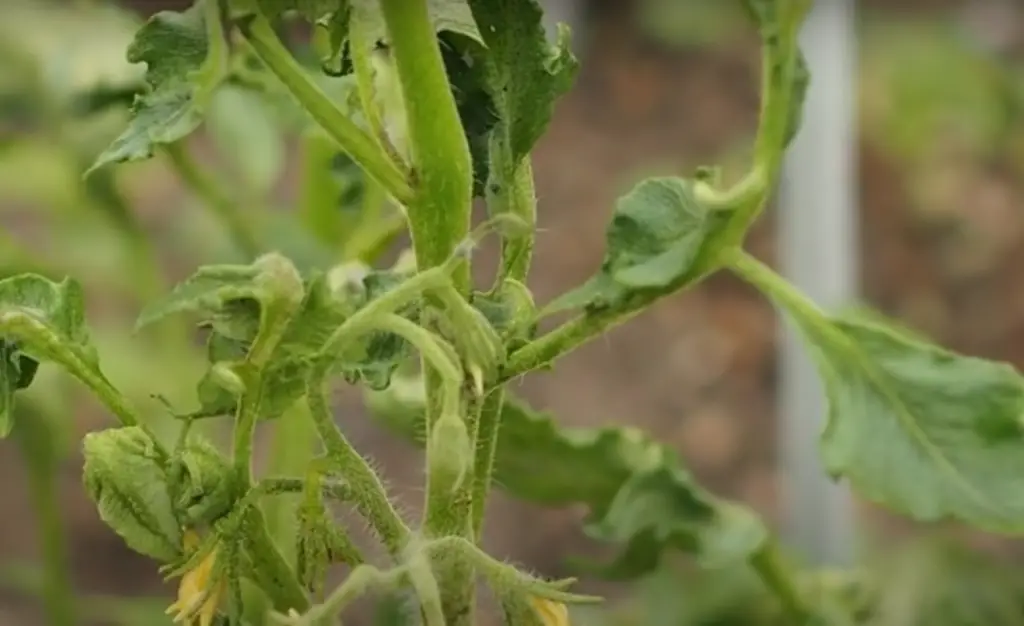
What Are the Benefits of Companion Planting?
Companion planting is a great way to not only ensure that your tomatoes are getting the best they can out of their environment, but also to benefit other plants around them. By encouraging a higher diversity of species and providing natural pest control in the form of beneficial insects, companion planting creates an ecosystem within your garden and helps all your plants thrive.
Some benefits include:
- Increased disease resistance – when you create an environment with plenty of biodiversity, it increases the likelihood that any diseases affecting one plant will be less likely to affect its neighbors. This decreases the need for chemical pesticides or fungicides and keeps a more natural balance in the system.
- Maximizing nutrients – having diverse companions allows different plants to specialize in nutrient uptake, so they can all benefit from the same soil without competing for resources.
- Natural pest control – many insect pests rely on a single plant species to survive and reproduce.
Companion planting is an easy way to get more out of your garden and keep it healthy and thriving! Research what other plants grow well with tomatoes in your area, and be sure to give them plenty of space while keeping their roots happy. With careful planning and maintenance, you’ll soon be enjoying delicious home-grown tomatoes!
Best Tomato Companion Plants to Repel Harmful Insects
Tomatoes can be prone to insect infestations, so it’s important to choose companion plants that help keep the bugs away. Marigolds are a great choice for natural insect control, as the smell of their flowers is known to repel pests such as thrips and tomato hornworms. Planting basil near tomatoes helps ward off mosquitoes and flies, while garlic will help keep the most destructive pests away from your crop.
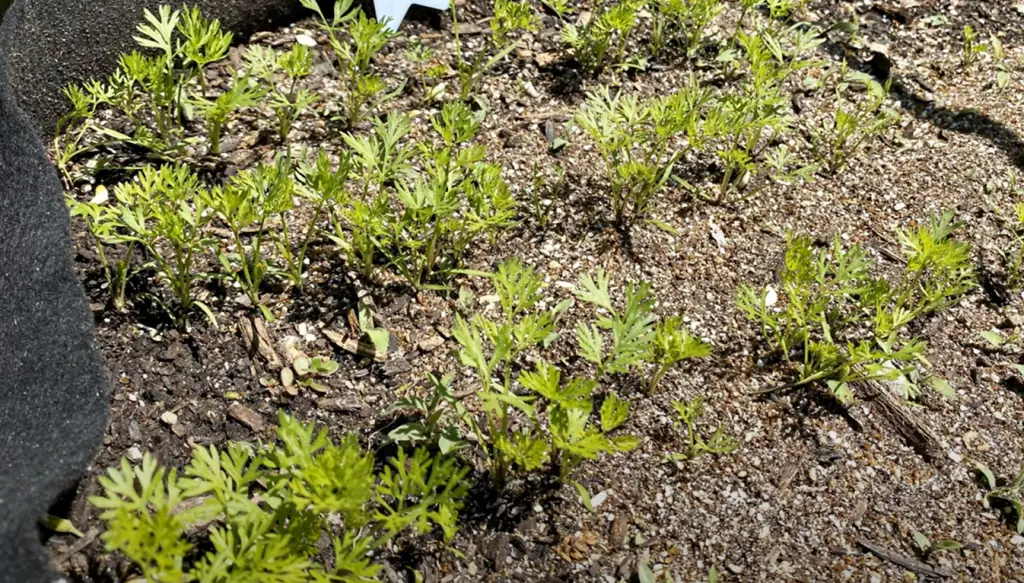
Parsley is another great choice, attracting both beneficial and predatory insects which can help discourage unwanted pests. Finally, oregano has been shown to repel a wide range of harmful insects, from flea beetles to spider mites.
Calendula
Calendula, also known as pot marigold, is a fast-growing companion plant for tomatoes. It is an annual flower that blooms brightly in shades of orange and yellow throughout the summer months. Calendula naturally repels harmful pests like aphids, slugs, and snails while improving the flavor of tomatoes. Planting calendula alongside your tomatoes will help to attract beneficial pollinators like bees and butterflies which can help boost their overall production! Additionally, the fragrant blossoms of calendula are edible flowers that can be used to decorate salads or other dishes. To grow calendula you’ll need a sunny spot in well-draining soil with regular watering during dry spells. It’s a great low-maintenance plant to pair with tomatoes and can be used in herb gardens or flower beds. Calendula is a wonderful companion for any tomato gardener, adding beauty to the garden while providing natural pest control!
Chives
Chives make a great companion for tomatoes. Chives act as a natural pest repellent, discouraging aphids, spider mites and other garden pests from attacking your tomato plants. They can also attract beneficial predatory insects such as ladybugs and lacewings that will help to keep your garden healthy and free of damaging bugs. Additionally, chives provide shade for tomato plants in hot climates, helping to protect them from direct sunlight and keep them cool during the summer months. Planting chives near tomatoes is an easy way to get all these benefits without much extra effort!
Black-Eyed Peas
Black-Eyed Peas are a great companion plant for tomatoes. The peas help to fix nitrogen in the soil, which is essential for healthy tomato plants. Growing the peas near your tomatoes will create a rich environment that helps both types of plants thrive. Additionally, the black-eyed pea vines can act as a living trellis for the tomato plants, which helps to keep them upright and supported. When planting black-eyed peas with tomatoes, be sure to give them plenty of room to spread out so they don’t crowd each other and stunt their growth.
Radishes
Radishes can be great companions for tomatoes, as they have a short growing season and can help keep the soil loose and aerated. They also release compounds that are beneficial to the tomato plant, such as nitrogen and phosphorous. Planting radishes around your tomatoes will give you an extra boost of nutrients! Additionally, the spicy flavor of radish leaves makes a good addition to salads or sandwiches. Just make sure not to overcrowd your garden bed with too many plants, as this can lead to stunted growth in all of them.
Sage
Sage is a hardy and aromatic herb that makes an ideal companion plant for tomatoes. Its strong aroma helps to repel pests, while its dense foliage offers shelter from harsh weather conditions. Plant sage near your tomato plants to keep aphids, snails, whiteflies, and other insects away. Another benefit is that it will attract beneficial pollinators to help with the pollination of your tomatoes.
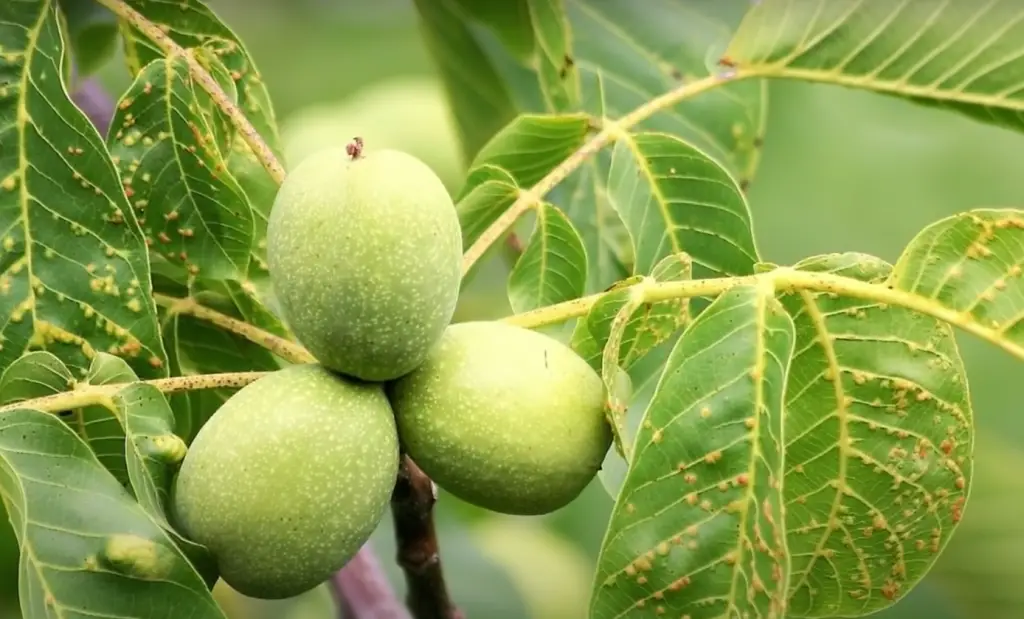
Sage also contains antifungal properties which can help prevent blossom end rot in tomatoes. When planting sage, be sure to give it plenty of room as it can become invasive over time. Pruning or harvesting regularly will prevent this from happening. You can also use the leaves in salads or for flavoring soups and stews. Enjoy the many benefits of companion planting with tomatoes and sage!
French Marigolds
French Marigolds are often used as companion plants to tomatoes in the garden. The bright flowers of French marigolds repel insects such as aphids, whiteflies and nematodes that can damage tomato crops. They also help to draw pollinators into the garden which will be beneficial for tomato growth. Planting them near tomatoes is sure to help keep your crop healthy and strong! It’s important to note that marigolds should not be planted too close together with tomatoes because of their strong aroma; they may overwhelm the more fragile tomato plant. To make sure there’s enough space between the two species, it’s a good idea to keep marigold plants at least 18 inches away from tomato plants.
Nasturtiums
Nasturtiums are an ideal companion for tomatoes. Not only do these vibrant flowers help to attract pollinators, but they also act as a natural pest repellent. The leaves of the nasturtium have an especially pungent mustard-like flavor that deters most common garden pests from feasting on your tomato plants.
Nasturtiums can also be used as edible garnishes—their peppery leaves make a delicious salad topping!If you’re looking for a colorful ground cover with added benefits, nasturtiums are an excellent choice for your tomato companion plants. Not only will they add beauty and life to your garden, but they’ll also help keep pesky pests at bay!
Best Tomato Companion Plants to Increase Beneficial Insects
Not only can companion plants help protect your tomatoes from pests, certain ones can also attract beneficial insects that will keep the bad bugs away! Here’s a list of the best companions to plant alongside tomatoes – don’t forget to add these to your garden this season.
Cilantro
Cilantro is a great companion plant for tomatoes. It deters tomato hornworms, which can be destructive to tomatoes. Plus, it adds flavor to your recipes! To keep cilantro healthy and productive in the garden, make sure it has plenty of sunlight and good soil drainage. Plant cilantro around the edges of the tomato bed or in containers on either side of the plants. When harvesting, take just a few leaves at a time so that new growth can replace them quickly – this will also help keep pest populations low! Cilantro is an easy-to-grow herb with lots of culinary uses – so why not give it a try in your tomato patch this year? You won’t regret it!
Oregano
Oregano is a fragrant herb that grows well with tomatoes, both in the garden and in pots. It’s an excellent companion plant for tomatoes as it helps to repel harmful insects and can add flavor to your tomato dishes! Plant oregano near your tomatoes but keep them away from potatoes – they don’t mix well together. Oregano likes full sun exposure and does best when fertilized every few weeks. Give it plenty of water but avoid over-watering as this can lead to root rot. Fertilize it lightly with a balanced fertilizer or liquid seaweed solution once a month during its growing season.
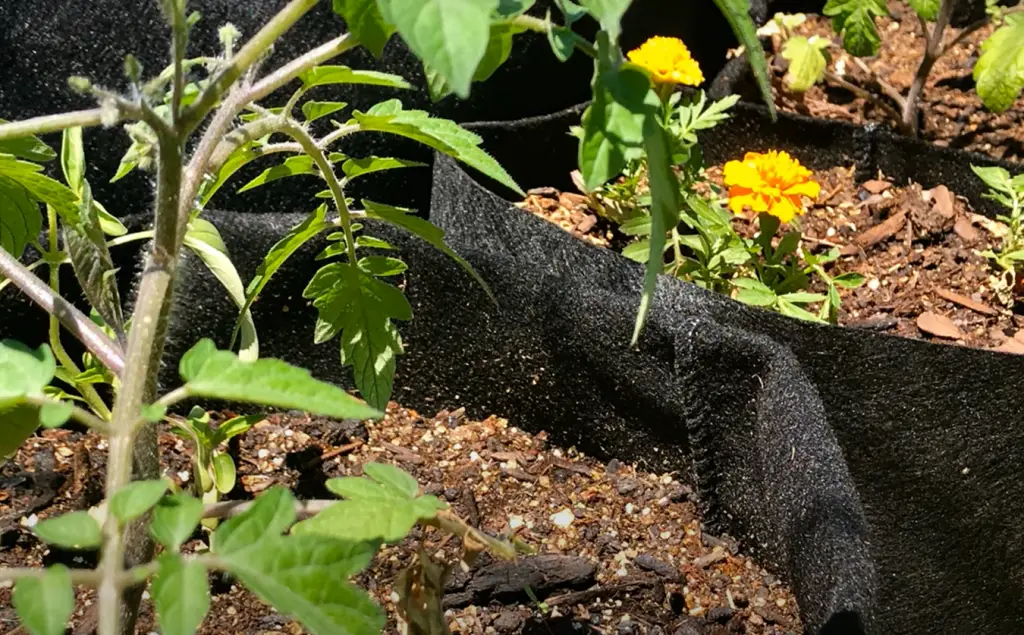
Once established, oregano should require very little maintenance; trimming back any sprawling stems will help keep it from overtaking your tomato plants. Enjoy the fresh, aromatic flavor of this herb in salads, on pizza and with most Italian dishes!
Parsley
Parsley is an excellent companion plant for tomatoes as it helps to reduce the concentration of tomato leafminers in the garden. It also attracts beneficial insects which can help pollinate your tomato plants and provide natural pest control. Parsley is easy to grow and comes in both curly and flat-leaf varieties. For best results, plant parsley near the base of your tomato plants, or around their stems, and enjoy its lovely aroma while reaping its benefits!
Best Tomato Companion Plants for Weed Control
Weeds can be a real problem when it comes to tomato gardening. Not only do they compete with the plant for nutrients, moisture and sunlight, but they also provide shelter and food sources for pests. Using companion plants can help keep these pesky weeds in check and promote the healthy growth of your tomatoes.
Crimson Clover
Crimson clover is an excellent companion for tomatoes, as they provide nitrogen to the soil and reduce weed competition. Crimson clover also attracts beneficial insects, which helps to keep harmful pests away from your tomatoes. Planting crimson clover along with your tomatoes will help improve the health of the soil, ensuring healthier plants and tastier harvests! It’s important to note that this annual legume should be planted early in spring in order for it to have time to flower before the summer heat arrives. Crimson clover can be easily incorporated into crop rotation systems or used as a cover crop as well. With proper care and maintenance, its deep taproot helps loosen compacted soils and break up clay-like soils making them easier for tomato roots to penetrate. If you are looking for a great companion plant for your tomatoes, consider adding crimson clover to your garden!
Best Tomato Companion Plants to Increase Pollination
Tomatoes need a lot of pollination to thrive and produce lots of delicious fruit. Planting certain companion plants alongside your tomatoes can improve the amount of available pollinators, helping you get the most out of your crop. Here are some of the best tomato companions for maximum pollination.
Lavender
Lavender is a great companion plant for tomatoes! Its fragrant foliage and purple flowers are not only beautiful, but can also act as a natural pest repellent for your tomato plants. Plus, its strong aroma will help mask the scent of the tomato plants, which some pests are attracted to. When planting lavender with tomatoes, make sure to provide plenty of sunshine and well-drained soil. If you’re growing in containers, use a light potting mix that contains lots of organic matter. Lavender needs more frequent watering than tomatoes so keep an eye on it when temperatures rise. Pruning back spent flowerheads will also encourage new blooms, keeping your garden looking fresh all season long!
Sunflowers
Sunflowers are a great companion plant to tomatoes. Not only do they provide the tomato plants with shade in hot weather, but they also act as living trellises, allowing you to tie your vines up for better air circulation and easier harvesting. Sunflowers are also excellent at attracting pollinators like bees and butterflies, which can help increase your tomato yield!
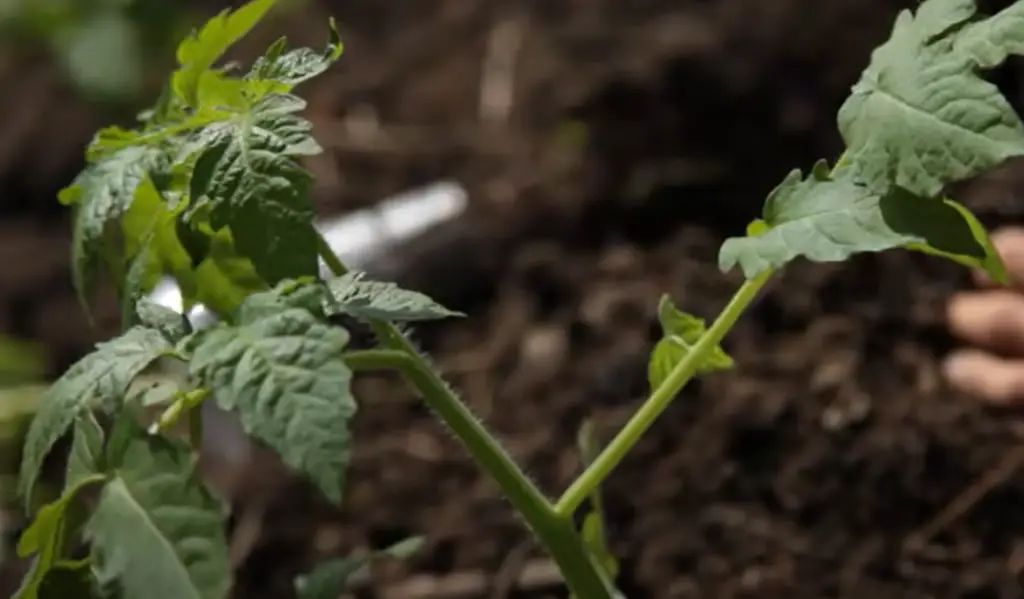
When planting sunflowers alongside tomatoes, make sure there’s enough space between them so the roots have room to spread out without competing for nutrients. In addition, avoid using chemical fertilizers near your sunflowers as they can be toxic to bees. With these simple steps in mind, you’ll be well on your way to growing a successful harvest of both tomatoes and sunflowers!
Zinnias
Zinnias are prized for their bright, colorful flowers and are known to attract bees and hummingbirds in the garden. They make great companions to tomatoes, as they provide attractive blooms without taking away from the tomato plant’s nutrients. Plus, zinnia’s strong root system helps prevent soil erosion around a tomato patch. When planting zinnias with your tomatoes, it’s best to keep them on opposite sides of each other so that they don’t compete for light or water resources. It’s also important to pick varieties of both plants that bloom at different times so you can ensure a continuous crop throughout the season. Finally, zinnias require little maintenance, making them an ideal companion plant for busy gardeners!
Best Tomato Companion Plants to Improve Tomato Health
Tomatoes are one of the most popular vegetables, but they need a bit of help to thrive and bear an abundance of fruit. That’s why it makes sense to associate tomatoes with other plants as companion plants.
Companion plants can be beneficial in several ways. They can act as insect repellents or traps, improve soil fertility, and provide nutrients that tomatoes would otherwise have difficulty accessing. Here are some tomato companion plants you should consider for your garden.
Asparagus
Asparagus is an amazing companion plant for tomatoes, as it offers shade and protection from the sun during hot summer days. Planting them together helps to keep weeds and pests away and also provides the necessary nutrients that tomatoes need. Asparagus also produces a natural oil which has a repellent effect on certain pests which can be beneficial when growing tomatoes nearby. Make sure to give your tomato plants plenty of space between them when planting them with Asparagus, as this will help to reduce competition for resources such as water and sunlight. Additionally, you should avoid applying any kind of nitrogen fertilizer near Asparagus plants, because they are sensitive to high levels of nitrogen in the soil.
Basil
Basil is one of the most popular companion plants for tomatoes. It helps to repel common pests, such as nematodes and aphids, while also attracting beneficial insects, such as bees and ladybugs. Basil also provides a delightful scent that complements tomato flavor while growing near it in the garden. Additionally, basil can help improve the overall health and yield of your tomato plant by providing shade from direct sunlight and enhancing soil fertility. When growing both tomatoes and basil together, ensure adequate spacing between them so their roots don’t compete with each other for nutrients in the soil.
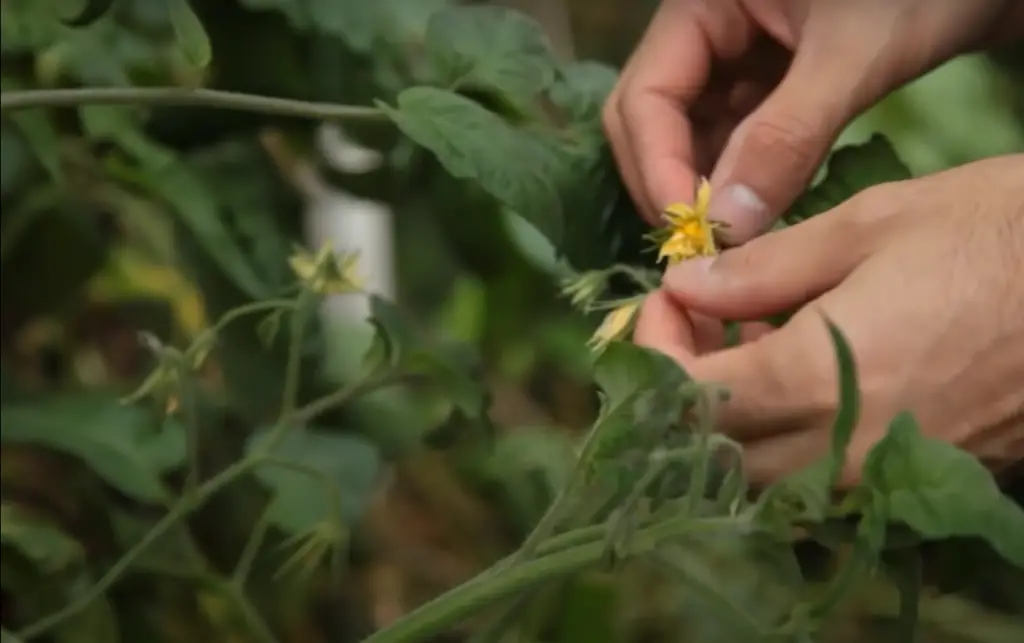
For optimal growth, look for varieties of basil that are fast-growing and heat-tolerant when planting near tomatoes. Sweet Genovese basil is one of the most popular varieties for companion planting. Plant this variety near your tomatoes and you’ll be rewarded with a delicious aroma, vibrant green foliage, and an added bonus of pest-repellent benefits!
Borage
Borage is a great companion plant to tomatoes. It helps attract pollinators, improves soil fertility, and helps prevent disease. Borage has small flowers that are bright blue or purple in color and have a sweet honey scent. This attracts bees, butterflies, and other beneficial insects. The leaves of the borage plant are edible and can be used in salads or as garnishes for soups or stews. Borage also adds nitrogen to the soil which helps tomato plants grow bigger and better fruits. In addition, its roots help draw out additional nutrients from the soil which further increases nutrient availability for nearby plants like tomatoes. When growing borage near tomato plants it’s important to keep its growth under control so it doesn’t become invasive or overshadow your tomatoes.
Carrots
Carrots are an excellent companion plant to tomatoes. Not only do they help keep pests away, but their deep taproots loosen up the soil and add extra nutrients–great for your tomato plants! Plant them a few inches away from your tomatoes so that both plants have enough space to grow. Keep in mind that carrots can take two to three months to reach maturity, so be sure not to crowd them out when you’re planting other vegetables around them. Once mature, carrots can also supply a tasty snack along with your homegrown tomatoes!
Garlic
Garlic can make a great companion plant for tomatoes. It’s an easy to grow, aromatic bulb that deters aphids and other pests, making it a worthwhile addition to any garden. Garlic also provides beneficial nutrients to the soil which will help your tomato plants thrive. Plant garlic near or around your tomato plants early in the season and harvest when the leaves begin to yellow. Be sure not to let them dry out before harvesting, as they can quickly become too strong in flavor! There are many varieties of garlic available so you’re sure to find something that fits your needs perfectly. Try out some of the more common varieties like ‘Rocambole’ or ‘Purple Stripe’; or experiment with different heirlooms for something a bit more unique.
Best Plants to Grow in Containers with Tomatoes
Growing tomatoes in containers is a great option for gardeners who want to add a bit of homegrown flavor to their meals. But that doesn’t mean you have to go it alone! Planting companion plants alongside your tomatoes can be beneficial for both the tomato plant and any other vegetables you choose to grow in the same container. Here are some of our favorite companions for tomatoes.
Sweet Allysum
Sweet allysum provides a fragrant, low-growing flower bed to tomatoes, and is often used as an ornamental in the garden. It blooms throughout the summer months with its sweet-smelling flowers, making it both attractive and beneficial to tomato plants.

Sweet allysum is also known for its pest repellent qualities; it helps keep away aphids and other pests that may damage tomatoes. The plant’s leaves can also be used as mulch or compost for tomato plants; providing essential nutrients during the growing season. All in all, sweet allysum is a great companion plant for tomatoes!
Thyme
Thyme is an excellent companion plant for tomatoes for many reasons. First of all, it’s aromatic which makes it a great deterrent against pests and other intruders that may harm your tomatoes.
Thyme also has a strong scent which helps confuse pests making it harder for them to locate your tomato plants. Plus, thyme provides beneficial nutrients to the soil helping to promote growth and healthy development of your tomatoes!Finally, thyme can provide additional support to your tomatoes by attracting pollinators like bees and butterflies to the garden. This will help ensure that your tomatoes have enough pollination necessary for creating delicious fruit!
Worst Tomato Companion Plants
When it comes to companion planting with tomatoes, there are some plants you should generally avoid growing near them. These include.
Cole Crop (Brassica) family
Plants in the Cole crop family, such as broccoli, cauliflower, cabbage, Brussels sprouts and kale, should not be planted near tomatoes. This is because all plants in the Cole crop family are host to several insects and diseases that can easily spread to any nearby tomato plants.
Fennel
The strong scent of fennel can attract pests and cause the growth of tomatoes to be stunted. Additionally, fennel also competes with tomatoes for essential nutrients from the soil. For these reasons, it’s best to avoid planting them together.
Dill
Dill is part of the same family as fennel and it shares the same problems. However, unlike fennel, dill is a short-lived annual that needs to be replanted every year. Therefore, if you’re looking to avoid planting near your tomatoes, it’s best to choose an alternative annual plant instead.
Nightshades
Nightshades, such as potatoes and eggplant, should not be planted near tomatoes because they are all part of the same family and can easily spread disease to each other.
Cucumbers
Cucumbers are another bad companion plant for tomatoes. They can attract the same pests and diseases as tomatoes, them more prone to infestation.
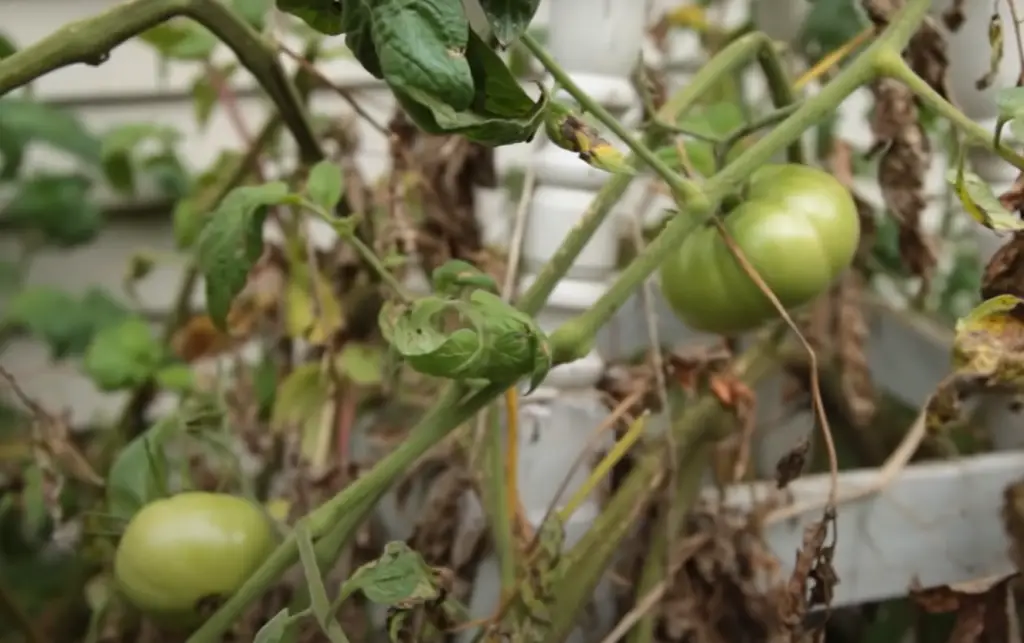
Additionally, cucumbers can also compete with tomatoes for nutrients from the soil, which can have a negative effect on tomato growth.
Sweet Corn
The roots of sweet corn are very invasive and can take up a lot of space in the soil. This makes them a bad companion for tomatoes, as they can easily steal essential nutrients from tomato plants. Sweet corn also attracts the same pests and diseases as tomatoes, making them more prone to infestation.
Rosemary
Rosemary is a vigorous herb that can take over the soil, depriving tomatoes of essential nutrients. Additionally, rosemary also emits a strong scent which can attract pests and stunt the growth of tomatoes. [1]
FAQ
What is the best companion plant for tomatoes?
The best companion plant for tomatoes is basil. Basil grows well when planted near tomatoes and can help to deter certain pests from attacking the tomato plants. It also adds flavor to fresh, homegrown tomatoes! [2]
Can tomato plants multiply?
Tomato plants are a great choice for gardeners of all kinds, but an especially great pick if you’re looking for something that multiplies quickly. The answer to this question is yes – tomato plants can multiply!
If you want to get the most out of your tomato plant, it needs warm temperatures and plenty of sunlight during the peak summer months. It also helps to give them plenty of water and fertilize them regularly. With these conditions in place, your tomatoes will thrive!
When it comes time to harvest your tomatoes, it’s generally best to wait until they’ve turned red and become slightly soft on the vine. This allows the fruit to ripen fully and develop its full flavor. Once harvested, the tomato plant will continue to produce more fruit if given the right conditions.
Tomatoes also have a tendency to spread themselves through self-seeding. This means that once you’ve harvested all of your tomatoes, you can expect some of the seeds from those tomatoes to germinate and form new plants in the same area. This is a great way to ensure you always have tomatoes growing in your garden! [3]
In addition to self-seeding, companion planting with other vegetables is also an excellent way to help your tomato plants multiply quickly. Companion planting involves pairing certain types of plants together in order to benefit both varieties. For example, when paired with marigolds or nasturtiums, tomato plants can grow healthier and stronger. When planted with herbs such as oregano or basil, tomatoes can also benefit from the companion plant’s pest-repelling abilities.
As you can see, there are plenty of ways to help your tomato plants multiply quickly! With the right environment, planting companions, and a little TLC, your garden should soon be filled with delicious tomatoes for everyone to enjoy!
Finally, don’t forget to save some of your tomato seeds. This will allow you to start a new batch next season without having to buy new plants every year!
What do you cover tomato plants with?
If you want to protect your tomato plants from the cold or wind, you can cover them with a simple sheet of frost cloth. Frost cloth is made from spun-bonded polypropylene fabric and provides protection from temperatures down to around 28 degrees Fahrenheit (or -2 degrees Celsius). It also prevents pests like birds and rabbits from getting at your precious tomatoes. Make sure you secure it firmly to the ground so that it doesn’t blow away in strong winds! You can remove the frost cloth when temperatures warm up again.
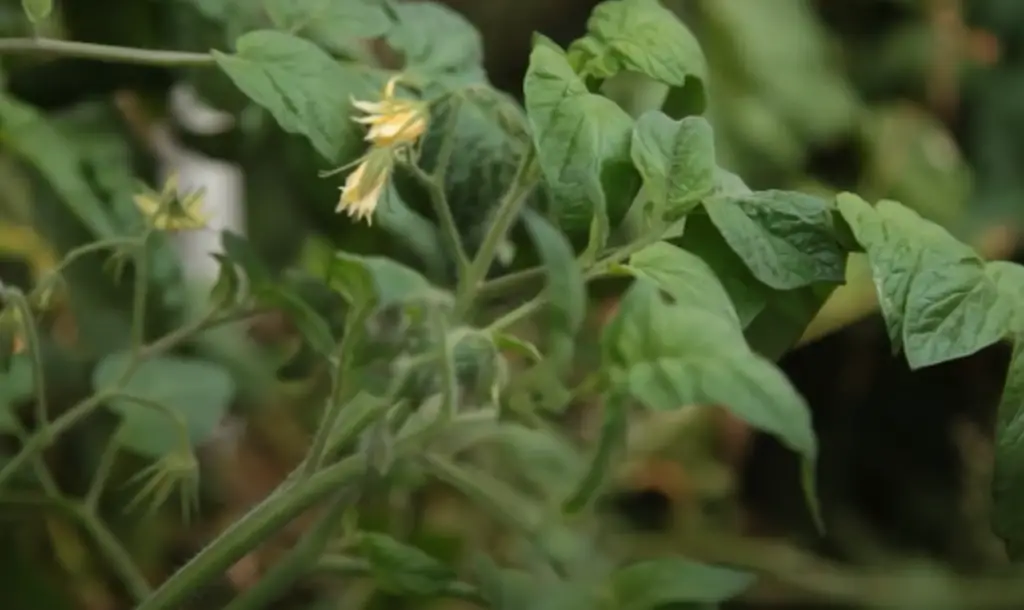
Another option is to use floating row covers which are lightweight fabrics that create an insulation barrier against chilly temperatures. These are particularly useful if you have multiple plants next to each other as they can be placed over a row of tomatoes. They can also keep out pesky insects and provide a bit of shade on hot summer days. Make sure you secure the edges to the ground so that they don’t move in the wind. [4]
Finally, if your tomato plants need extra protection against frost or heavy winds, you can use an old blanket or tarp over them. It’s important to make sure it’s securely fastened to the ground so that it won’t blow away. Again, remove the covering once temperatures begin to rise again.
What not to plant with zucchini?
Planting zucchini near certain types of plants can have adverse effects. You should avoid planting zucchini in proximity to:
- Potatoes, as they can be affected by the same diseases and pests.
- Cucumbers, as they share some common problems such as powdery mildew and squash bugs.
- Pumpkins, as their excessive growth might shade the smaller zucchinis or compete with them for resources like water and minerals.
- Onions, which are known to attract aphids that spread viruses and cause harm to your crops.
- Radishes, which are also prone to many of the same illnesses that affect other cucurbits (the family of plants that includes zucchini).
It’s important to keep in mind that the best way to ensure healthy and successful zucchini growth is by making sure you plant it away from these companion plants. Doing so will help avoid any potential problems or issues arising from disease or pest infestations. With the right knowledge, you’ll be able to create a happy home for your zucchinis!
Useful Video: 5 Best Companion Plants for Tomatoes for Maximum Yields and Healthy Plants & 2 Plants Tomatoes Hate
Conclusion
Companion planting tomatoes in your garden can be a great way to help your tomato plants thrive and increase yields. Not only does companion planting provide protection against pests and diseases, it also helps to improve the flavor of the fruits. By creating a healthy ecosystem full of supportive companions, you will be giving your tomatoes the best chance for success! Be sure to rotate between different companions each year and experiment with what works best in your own garden. With this knowledge, you should now feel confident about which companion plants work well with tomatoes and how to make the most out of them.
References:
- https://www.thespruce.com/companion-plants-for-tomatoes-1403289
- https://www.homefortheharvest.com/companion-plants-for-tomatoes/
- https://letstalkscience.ca/educational-resources/backgrounders/life-cycle-a-tomato-plant
- https://www.redding.com/story/life/2021/09/30/how-protect-tomatoes-fall-frost/5901501001/





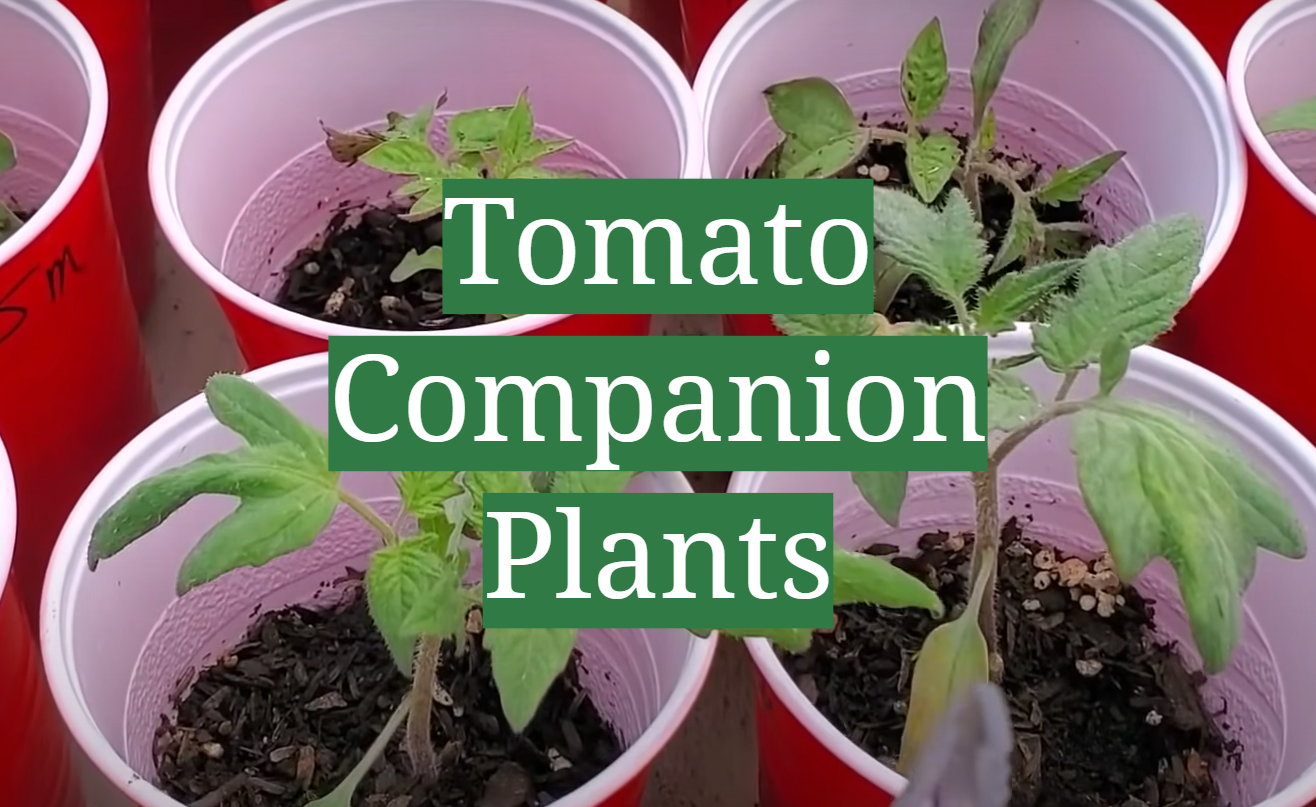




Leave a Reply
View Comments